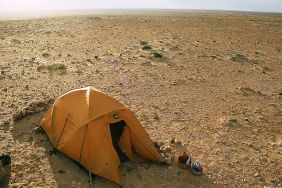 As fun as hiking and camping during the winter months can be, freezing temperatures and icy conditions can pose more health risks than many are used to. One such risk is hypothermia, and today we’ll take a closer look at how you can protect yourself on the trail this winter.
As fun as hiking and camping during the winter months can be, freezing temperatures and icy conditions can pose more health risks than many are used to. One such risk is hypothermia, and today we’ll take a closer look at how you can protect yourself on the trail this winter.
Hypothermia occurs when your body’s temperature decreases due to exposure to cold conditions, and it can be life-threatening. Like many other afflictions, the symptoms associated with hypothermia may go unnoticed, even by the person displaying them. Keep a look out for shivering, slurred speech, increased lack of communication, and lethargic behavior.
To prevent against hypothermia, be sure to stay as warm as you can, stay dry, stay hydrated, and eat regularly throughout your activity. Also, it’s smart to keep a small vacuum-sealed bottled on hand, filled with a hot drink or soup. This will help you warm up when your body gets too cold.
Should you notice the onset of hypothermia early enough, you can stop it from getting out of hand by putting on thick, dry clothing, or eating warm fluids or eating warm food. Also, put the afflicted person in a sleeping bag, preferably one that’s been warmed up by another person. Someone with hypothermia simply won’t have enough body heat to heat the bag themselves. You can also put warm water in bottles and place the bottles in the sleeping bag to keep the person warm, too, or use another person to combine body heat. Finally, if the situation is deadly serious, contact emergency services or the nearest ranger post for evacuation.
Hypothermia is a very real, serious risk when you spend time outdoors this winter. The tips above will help you recognize the symptoms of hypothermia, as well as how to remedy it once it sets in, which might save a life in the backcountry.








